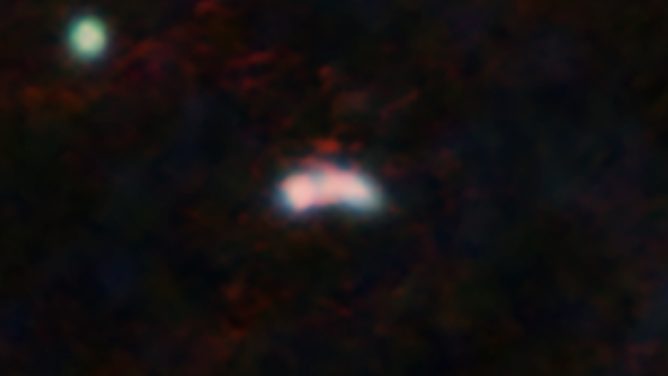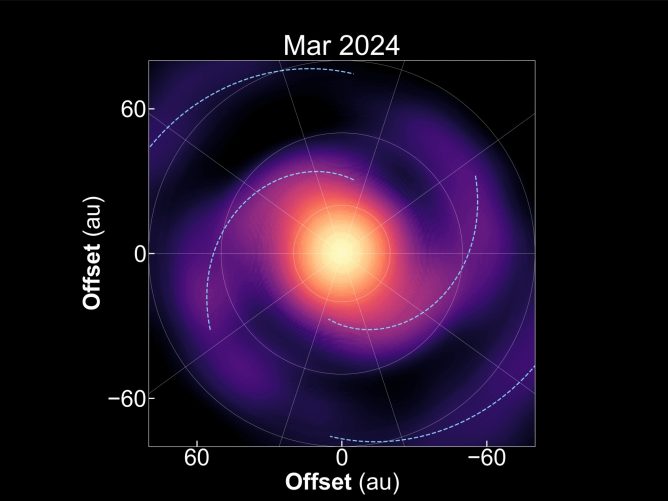It is known that gas jets are ejected from a baby star, but it was not clear how the jets are formed. By observing the rotation of the jets in detail and combining it with theoretical models, astronomers identified the driving mechanism and the role of the jets in star formation.
Using ALMA, the team led by Yuko Matsushita at NAOJ found that the jets from a protostar OMC 2/FIR 6B are rotating at very high speed. The velocity of rotation and angular momentum of the FIR 6B jets are the highest among all the jets detected so far. The rotational velocity and angular momentum are much larger than previously predicted and can only be explained by the magnetic drive model. The rotation of the jet can be realized by forcing the rotation of a disk at a radius of 3 au from the protostar to be transmitted to matter at a distance of 100 au by the force of a magnetic field. This research has also clarified that jets appear due to the effect of magnetic fields. The jet also causes the gas in the disk to lose its angular momentum and fall to the center of the disk, helping the protostar to grow. These super-fast rotating jets appear only during the short period when the young star growing. This study showed that jets play an essential role in the growth of stars.

Artist’s impression of a jet spiraling out of a protostar
Credit: Kyushu University, All rights reserved.
Paper information
These research results were published as Yuko Matsushita et al. “Super-Fast Rotation in the OMC 2/FIR 6b Jet” in the Astrophysical Journal on July 22, 2021.
This research was supported by JSPS KAKENHI (No. JP21K03617, JP21H00046).
The Atacama Large Millimeter/submillimeter Array (ALMA), an international astronomy facility, is a partnership of the European Organisation for Astronomical Research in the Southern Hemisphere (ESO), the U.S. National Science Foundation (NSF) and the National Institutes of Natural Sciences (NINS) of Japan in cooperation with the Republic of Chile. ALMA is funded by ESO on behalf of its Member States, by NSF in cooperation with the National Research Council of Canada (NRC) and the Ministry of Science and Technology (MOST) and by NINS in cooperation with the Academia Sinica (AS) in Taiwan and the Korea Astronomy and Space Science Institute (KASI).
ALMA construction and operations are led by ESO on behalf of its Member States; by the National Radio Astronomy Observatory (NRAO), managed by Associated Universities, Inc. (AUI), on behalf of North America; and by the National Astronomical Observatory of Japan (NAOJ) on behalf of East Asia. The Joint ALMA Observatory (JAO) provides the unified leadership and management of the construction, commissioning and operation of ALMA.









